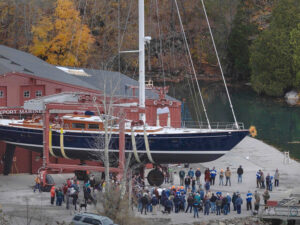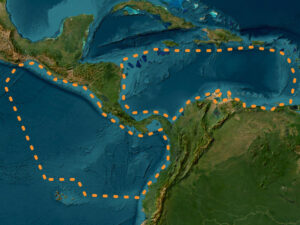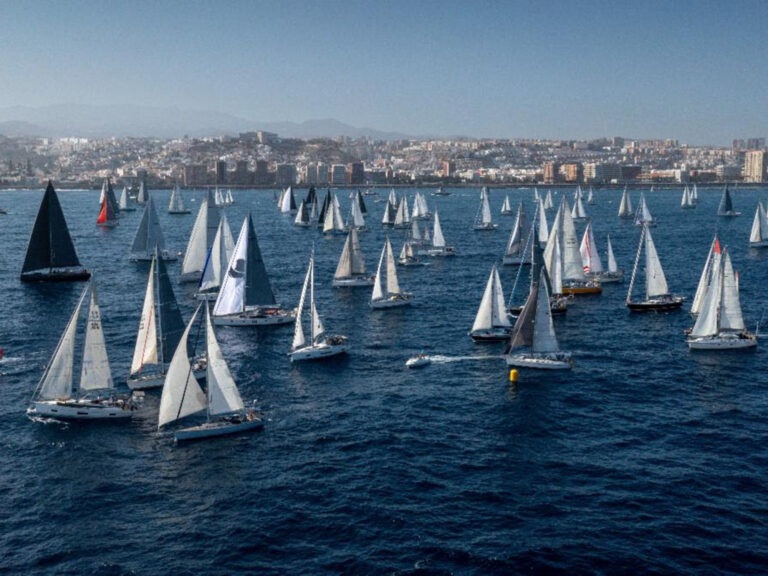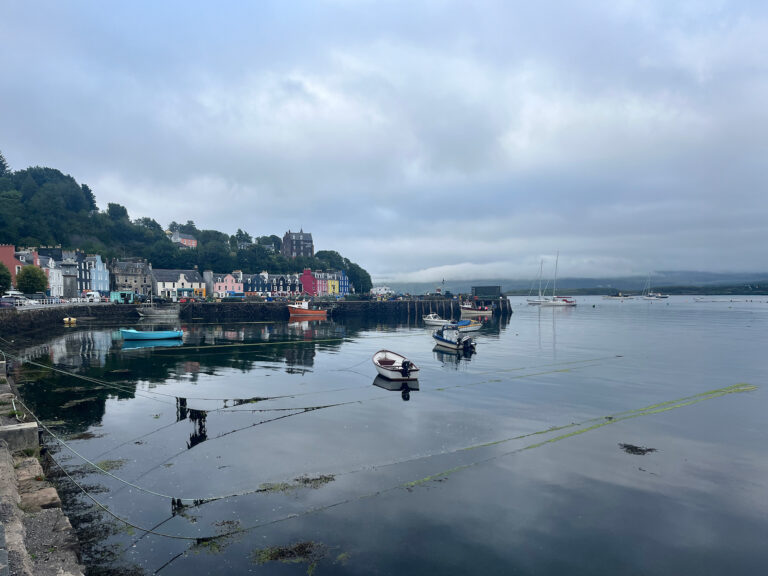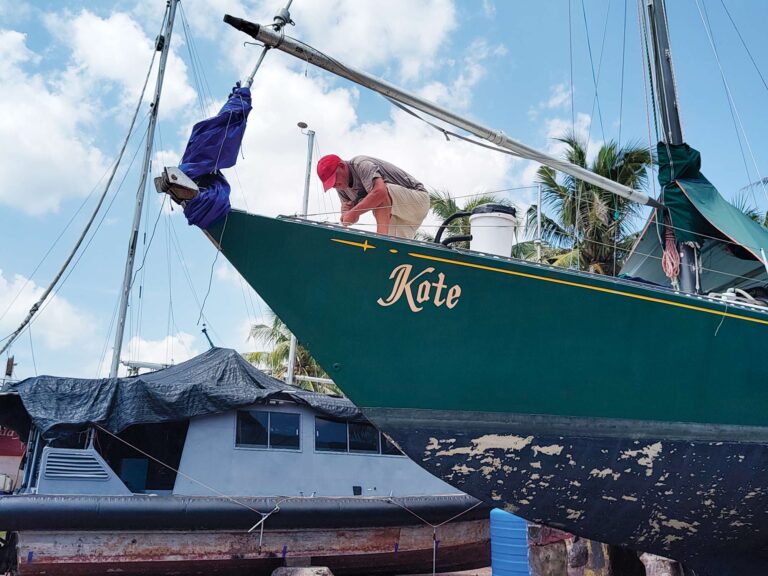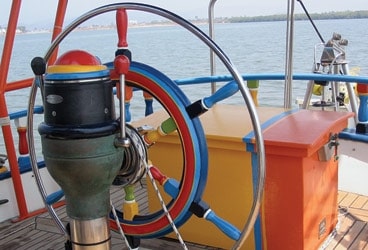
moroccan makeover368
Three years ago, I fell in love with a boat for her wood. Built in Taiwan, Sereia’s brightwork is sexy: curlicues on the taffrail and carved arabesque patterns on the bow. Sure, the varnish was peeling like a three-day-old sunburn, but that was nothing a little elbow grease wouldn’t fix. Right?
Two years later, I was still stripping woodwork on our 36-foot Mariner ketch, which was built in 1979. I’d learned how to use a heat gun and scraper like nobody’s business. But between working for a living as a chef and preparing to go cruising, getting that varnish down to bare wood was daunting. In the meantime, everyone had an opinion: Varnish it! Epoxy it! Let it go gray!
I love color, especially the colors of the Caribbean and all those wonderful fishing boats in the islands. Painted candy colors of turquoise, pink, and yellow, they look like luminous jewels in the tropical sun. Back home, we stick to a sober palette of blues, greens, and white-but why? I started experimenting with color chips. As an art-school dropout, I knew from experience that if I wanted to go for “whimsical” while staying just shy of “hippie VW peace van,” I’d have to be careful in the colors I chose.
For one thing, my husband, Peter, and I couldn’t afford to repaint the white hull and navy-blue boot stripe, so these hues would have to be incorporated into the overall scheme. For simplicity’s sake, I went with one-part polyurethane paint; a comparison of color charts revealed to me that Pettit had a brilliant line of available colors.
I started mixing. Anything remotely resembling pink or purple got nixed, because although Peter is open-minded, he drew the line at sailing a pink boat. I studied Moroccan color schemes, which I’ve always loved, and noticed that these palettes were grounded in two or three very similar colors and set off by two or three high-contrast colors. What we finally decided on was navy blue and white, a dark blue, and a medium blue to ground the color scheme. To this we added bright yellow, orange, red, and green. When he saw the color chips on the deck, Peter looked a little green around the gills himself, but he swallowed, turned to me, and said weakly, “I trust you.” What a guy!
The wood was stripped bare, then painted with clear Interlux Interprime Wood Sealer. We didn’t bother with masking tape for this step; instead, we used cheap and disposable half-inch brushes and a rag to mop up drips. Once the sealer was dry, we mixed a solution of one cup of ammonia to a gallon of water and washed down the brightwork. The customer-support guys at Pettit said this was necessary to ensure that the primer adheres correctly to the sealed wood. We followed this little chemical bath with a light sanding using 80-grit sandpaper, then flushed the wood with water.
Time to prime! By this stage, we’d already left to go cruising-brightwork be damned-so we primed at random intervals between San Diego and Barra de Navidad, Mexico. We still used the cheap half-inch brushes, but we did invest in some good blue masking tape. (Buy your masking tape in the States; the tape we found in Mexico left a gummy residue on the hull.) Just one coat of primer did the job, and we were ready to paint.
We’d put so much thought into picking out the colors that when it came time to paint, it wasn’t really necessary to meticulously plan where each color would go. As a general rule, I used the blues for the larger areas, and I saved the bright orange, yellow, and green for accents. We still used disposable brushes, but for the details I also busted out some of my old art-school brushes to get a finer edge. As most of the colors were custom-mixed from the Pettit palette, we bought some plastic screw-top jars and mixed up our own shades about a pint at a time. The paint dried fast in the Mexican sun, so we decanted tiny amounts into plastic cups while we worked. For the surfaces on which we were likely to stand, such as the rubrail, the hatch cover, and the bow pulpit, we mixed beach sand into the paint to create homemade nonskid.
Three weeks, eight quarts of paint, and 144 cold beers later, we had ourselves a beautiful boat. Even Peter, who only later admitted that his blood ran cold at the thought of sailing “a box of Crayola crayons,” had to admit that Sereia’s bright colors made him smile as we rowed away in our dinghy. After all, ducking out of the rat race to enjoy life on the ocean is a pretty crazy thing to do. So why make your boat look serious? Besides, I’ve always loved Pez dispensers.
Antonia Murphy was a chef before she and her husband, Peter, set out cruising. They began the New Year in Whangarei, New Zealand, with an addition to their crew: a nine-pound son named Silas.
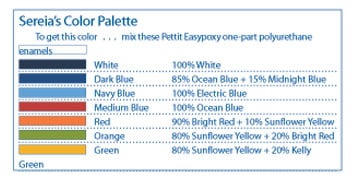
****| |****|



